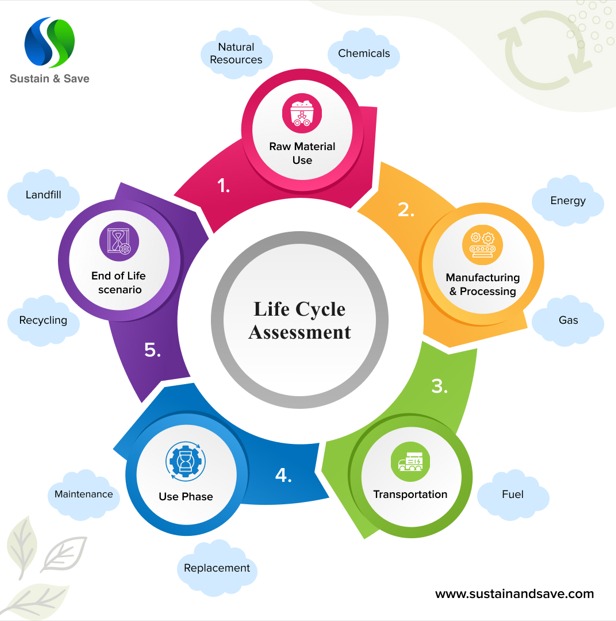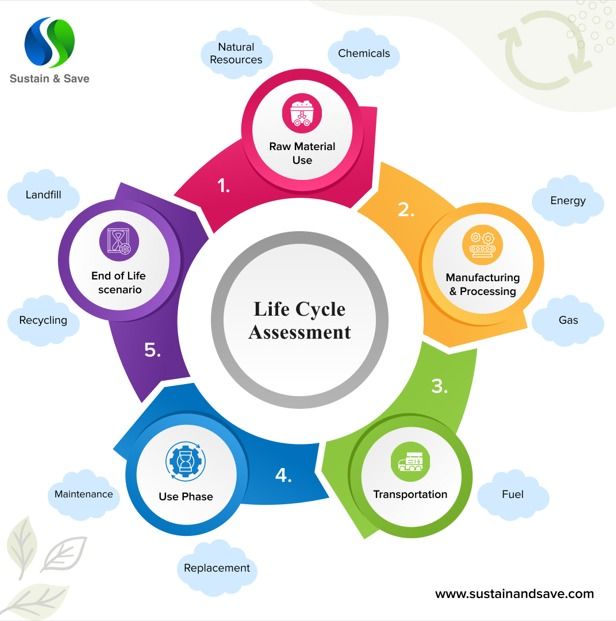
Learn how Life Cycle Assessment (LCA) & EPD helps businesses, developers, and manufacturers to communicate, target and reduce environmental impact, helping achieve market requirements, green certifications, and prepare for global frameworks.
Sustainability is no longer a choice; it’s becoming a requirement. From Real Estate developers aiming to integrate Green Building practices through Green Building codes and certifications– to manufacturers supplying products to Multi-National Companies (MNC’s); businesses across India are adopting Environmental Product Declarations (EPD) as a scientific approach to measure and communicate their environmental footprint.
But what exactly is an EPD?
It is like a nutrition label — but for products, not food. Instead of calories and carbs, it tells you about carbon footprints, energy use, water consumption, and waste generation of a specific product or group of products. It’s the product’s way of saying: ‘Here’s my environmental story, no fluff, just facts!’
To create an EPD – a detailed Life Cycle Assessment (LCA) is conducted which deep-dives into the raw materials used, how those materials were transported, the manufacturing process of the product, how it was used and finally how it would be disposed at the end of its life. An EPD is a summarized, verified form of the LCA Study.
“If sustainability is a scoreboard, an EPD would be the referee”. It sets the rules straight, transparently and consistently (or at least tries to). This process is tailored to each sector and product type by applying Product Category Rules (PCR); but more on that later.
It is a scientific tool used to evaluate the environmental impact of a product, or process throughout its entire life cycle, it is globally standardized supported by ISO 14025 norms as a type 3 eco-label.
Why is it important in India?
India’s rapid growth in construction, manufacturing, and exports makes it one of the key economies where Sustainability is no longer just an option but a necessity. With rising demand for Green Buildings, Low-carbon products, and ESG transparency, Indian businesses are increasingly expected to back their claims with data-driven carbon footprint assessments. At the same time, international trade policies like the EU’s Carbon Border Adjustment Mechanism (CBAM) and domestic green certification programs like GreenCo and GreenPro are making LCA a critical tool for both compliance and competitiveness.
Green Building Certifications in Real Estate
EPDs have now become essential for securing credits under LEED, IGBC, and GRIHA certifications. To obtain Green Building Certification, a developer must gather it from vendors for most of the used products.
For instance, a steel supplier must submit their product's EPD, while vendors of adhesives or tiles need to provide the EPD for their tiles. This demonstrates measurable embodied carbon and materials in a project helping the developer calculate the total carbon emissions of the project or select low carbon materials.
Corporate ESG & Compliance
Strong LCA reporting supports ESG disclosures demanded by investors, customers, and regulators. Eco Vadis – one of the ESG rating mechanisms; as well as the BRSR report mandated by the Securities and Exchange Board of India (SEBI) for top listed companies clear ask the applicant – Has an LCA of your products been done? This grants the applicant – the company doing an Eco-Vadis Assessment or BRSR report more points for their overall ESG rating, helping them improve the ESG score.
CBAM, the EU’s Carbon Border Adjustment Mechanism, will require exporters to report carbon emissions using primary data from suppliers starting January 2026. This mandate will compel suppliers of raw materials to calculate the specific carbon footprint of their supplies and an LCA study can tell you exactly that. By disclosing the specific carbon footprint of the raw materials, one can comply with CBAM regulations that mandate OEMs to use primary data from their suppliers and not just default values. This will future proof the exports from any carbon tax or penalties that will come into effect.
But leaving aside regulations and reporting requirements – with growing sustainability emphasis would you as a manufacturer of a product not like to know the answer to the following questions –
1. What is the carbon footprint of my product/ products?
2. Where are the emission hotspots in my product’s life cycle?
3. And finally, what should I do to reduce the product’s emissions?
An electronic product might produce most of its emissions during the use phase when it consumes electricity, an adhesive manufacturer might produce emissions more in the manufacturing stage than its use or disposal phase. Doing an LCA of your product will tell you exactly where your emission hotspots are and more importantly which aspects of the product’s Life Cycle are within your control and which as outside your control. This will in turn help you either target specific areas like raw material changes, manufacturing process or end of life depending on the results of the LCA and an EPD (which is a verified, summary of the LCA report) will help you to confidently disclose the product environmental impact.
Benefits of Conducting LCA
- Scientific, data-driven approach to sustainability
- Boosts brand reputation and green credentials
- Ensures compliance with international markets
- Supports green certification and ecolabels
- Long-term cost savings from efficient material use
India’s commitment to net zero by 2070, combined with global trade requirements and rising ESG scrutiny, makes LCA a strategic priority across industries. Companies that adopt EPDs now will:
- Gain a competitive edge in both domestic and export markets.
- Build resilience against upcoming carbon disclosure and product labeling policies.
- Strengthen their role in India’s transition toward a low-carbon, circular economy.
Looking to conduct an LCA for your project or product?
Sustain and Save helps businesses with LCA studies, EPD creation, and Green Building Certification support across industries.
Authors
Siddharth Bhagwat,
Head of LCA and ESG at Sustain and Save.
Shubham Joshi,
Sales Executive at Sustain and Save.
Contact us today
Mail: info@sustainandsave.com

